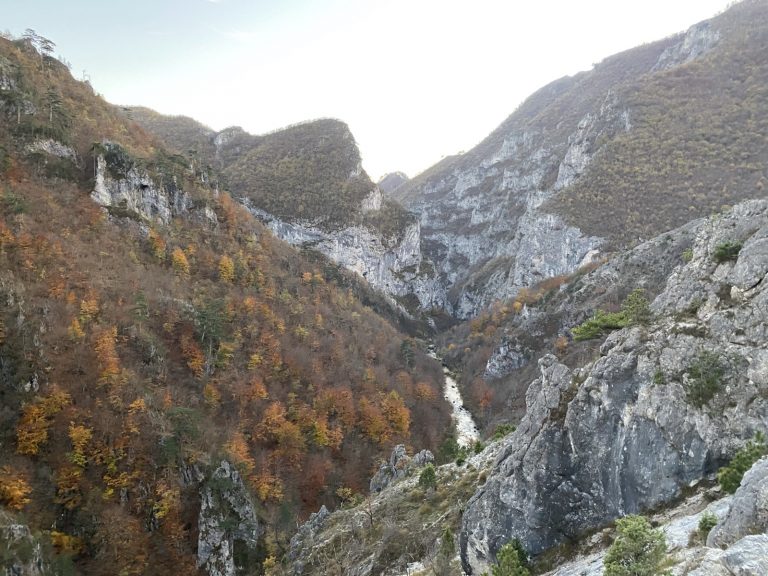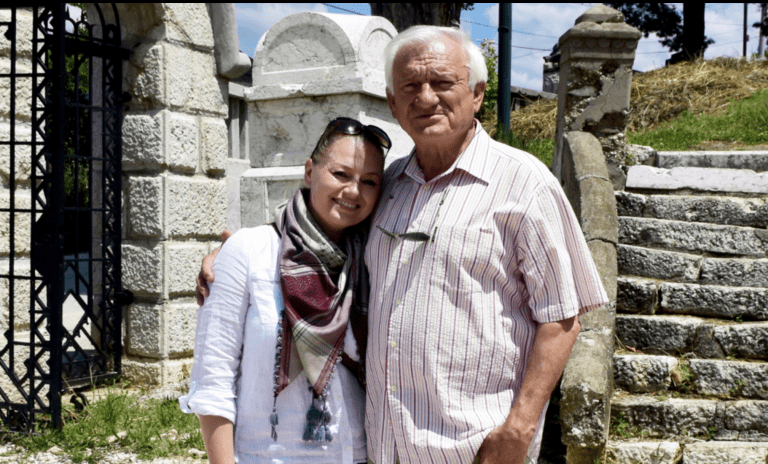Perpetrator or Victim – Gavrilo Princip and the First World War
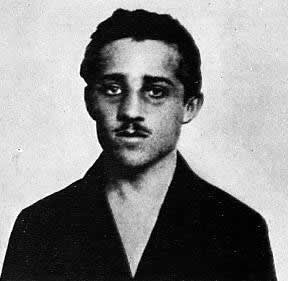
In the centennial commemoration of the assassination of Franz Ferdinand in Sarajevo, the participants of the International Conference on “The long shots of Sarajevo 1914-2014” attempt to interpret the events that are believed to have instigated the First World War. The results are quite surprising.
In 2014, Tim Butcher a best-selling author and award winning journalist published what is now the most complete biography of Franz Ferdinand’s assassin, Gavrilo Princip. Through Butcher’s almost obsessive quest for Princip, he is able to draw a highly revelatory portrait of the man who is said to have set the stage for the first great war. In Obljaj, Butcher locates the surviving members of the Princip family. Interestingly, he finds a rock where the young Gavrilo carved his initials in 1909. As Butcher writes in his book, after a friend asked the young Princip why he is carving his initials in a stone, the boy convincingly answered: “One day, people will remember my name”. And so, they did.
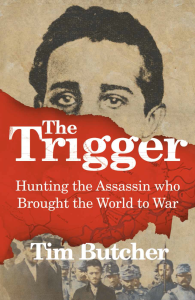
Five years later, Princip indeed wrote world history. One June 28, 1914 at about 10:45 in the morning, the 19 year-old high school student shot the Archduke Franz Ferdinand of Austria-Hungary and his wife Sophie during their visit to Sarajevo. The event went down in history as the immediate cause behind the First World War. One month later, on July 28, 1914, Austria-Hungary declared war on Serbia.

The question presented at “The Long Shots of Sarajevo 1914-2014: Events, Narrative, Memories” is simple. Is a young man from a small, isolated village able to trigger a chain reaction of this magnitude, which subsequently led to the greatest war of all time? Professor Dr. Clemens Ruthner from Trinity College in Dublin and Professor Dr. Vahidin Preljevic of the Faculty of Philosophy at the University of Sarajevo invited international historians, professors and authors to Sarajevo in order to create an updated dialogue on the topic. As the hosts point out, “The state of Yugoslavia would not have been established if it were not for the 1914 Sarajevo assassination. This same multi-ethnic state will become the cause of the Balkan wars in the 1990s. Hence the name, The Long shots of Sarajevo.” One of the aims of the conference is to integrate new findings into the already available sources of information on the subject. “We want to contribute to the reconstructions of events in order to identify which stories have ensued in the media, literature and politics, and how these narratives were then used in the cultural and political memories”. Professor Ruthner focuses on the relationship between Austria-Hungary and Bosnia and Herzegovina at the turn of the century, while Professor Preljevic deals with intellectual, cultural and perceptual histories between 18th and 20th centuries.

While history has established that the attack is the trigger of the First World War, the details of Princip’s intentions have been greatly overlooked until now. As Princip’s key biographer Tim Butcher says during one of his presentations, “He had no idea that his actions could lead to a world war. He also had no concept of what might happen after the assassination has been carried out”. Having been drawn in by the events of the 1990s war in the Balkans, Butcher travelled to Bosnia in 2012 in order to investigate the life of Gavrilo Princip as well as the origins of the First Great War. He was able to locate documents of great revelation, such as personal records of military doctor Martin Pappenheim, who served as a prison psychiatrist during Princip’s detention. “Princip’s idea was to unite Serbs, Croats and Slovenes. But not under Austrian rule. Rather in a different form of government – a republic or something similar”, Pappenheim recorded in his notes. From a young age Princip fought for justice and defended those who were unable to defend themselves, writes Butcher. He was born in 1894 in a religious Orthodox family. As a child, he was weak and frail, most likely due to the impoverished state in which the family lived. Six of his eight siblings died in infancy. Princip took refuge in books, reading works of Alexandre Dumas, Oscar Wilde, Walter Scott and many more. Pappenheim wrote that Princip would rather starve than sell one of his books. Considering that he was an excellent student, the family decided to send him to school in Sarajevo. In the small village where Princip grew up, there were no opportunities for this intellectual offspring. In Sarajevo, he attended business school.

The Princip’s travel to Sarajevo from Obljaj, and this trip ascends the rage in the boy. His father and him walked on foot through the mountains only to take the train to Sarajevo. This was in 1907, when the young Gavrilo was just 13 years of age. This same rage as a reaction to injustice was prevalent not only in Obljaj, but among farmers across the country. Poverty was the cancer of provincial life. Farmers faced with deep poverty regardless of their origin or religion. After Austrians took over the region in 1878, which was previously ruled by the Ottoman Empire, the Bosnian people expressed hope for the better. Austria described the new occupation of the country as a “humanitarian act”, which very soon proved to be a sham. A few roads were installed, however primarily for the use of military purposes. The newly constructed railway network was built for the exploitation of land resources, such as minerals and wood. “The Balkan region was the main supplier behind Austro-Hungarian industries”, says Professor Dzemal Sokolic from the University of Bergen.
Austria’s message was that only a Christian nation is able to make up for the incompetent rule of the cruel and corrupt Ottoman Empire. However, the feudal system introduced by the Ottomans was hardly changed. The beys (i.e. Prince) could continue to demand taxes of astronomical heights. As Butcher draws on the conditions of the time, he correctly points out that the newly built schools and universities in major cities like Sarajevo could not deny the fact that in 1910, 88% of the population could neither read nor write.
This inevitably led to the formation of a new wave of underground revolutionary organizations. In 1910, a 24 year-old law student Bogdan Zerajic attempted to assassinate the Austro-Hungarian governor of Bosnia, Marijan Varesanin. He was believed to have belonged to an underground secret society called “Freedom” as well as “Mlada Bosna” (Young Bosnia). After failing to shoot Varesanin, Zerajic shot himself, his last words being that he expects Serbian patriotism to avenge his death. This event drew even more attention to the group “Young Bosnia”. “Young Bosnia” – “Mlada Bosna” was a communist, anarchist group through which Serbs, Croats and Bosniaks were connected. Princip learned of the essayist, Vladimir Gacinovic, the best friend of Zerajic and the founder of the group. “At night, I went to the grave of my role model and swore that I would follow his steps”, Princip told his prison psychiatrist. So he joined the organization. This must have been in 1910. “The name was leaning toward the Marzinnis (Young Italy). The organization was not influenced by any other revolutionary movements in Europe at that time, whose aims were mainly to overthrow the leading heads by applying individual terror”, Ivan Colovic, a Belgrade-based ethnologist explains.

The target victim had to hold political significance, and so the choice was immediately the Archduke Franz Ferdinand. “This could be turned into a Hollywood flick”, said Clemens Ruthner. “A conflict between two men on a macho level. The unsympathetic occupier against the determined young man Gavrilo Princip. In historiography, a Czech chauffeur commanding the carriage of Franz Ferdinand and his wife made the attack possible. He took the wrong route and the assassin was able to gain close access to the Archduke. Had he taken the planned route, the carriage with the royal couple would have not passed the assassin. The Czech chauffer was apparently not informed that the old route had been changed”.
Boris Hrabac of the Medical Faculty of Sarajevo reported that the Slav lover Franz Ferdinand planned to install reforms by the end of 1914, which were to further secure the borders on the Drina against Greater Serbian Empire. The merger of Croatia, Bosnia and Dalmatia was to create South Slavia. These decisions were not taken well back home in Austria, since Austrians believed that such measures granted Slavs too much power. “A strong Serbia and Austria-Hungary were not in the interest of the South Slav people. There was rather a need to provoke a war with the Austrians. The young republic was very weak and unstable from the two Balkan wars of 1912 and 1913. It held high levels of debt to Germany and Austria as well,” Boris Krsev from the Institute of Law at the University of Novi Sad, explains.
As theologist, Prof. Dr. Hans-Peter Grosshans from the University of Münster explains, “Even ten years prior to the event in Sarajevo, a desire for war was widely spread among the youth in Austria and Germany”. The assassination in Sarajevo presented a perfect opportunity for the fulfillment of the desire for war. “It seemed to be the opportunity to finally express what many countries felt for a long time”, Vedad Smailagic of the University of Sarajevo asserts. In addition, the French and the Russian governments were willing to enter war in order to achieve their own foreign policy goals. The Hamburg historian Philipp Blom argues that industrialization is directly responsible for the First World War: “Due to industrialization, man was replaced by machinery. This inevitably led to depression. The male population was unable to express its masculinity, which was until that point defined by men’s ability to perform hard, physical labor. The desire to express the missing physical masculinity sparked the enthusiasm for war”. As Blom correctly points out, this could have been easily named “The Nightmare of Reason”. “The fast-paced, new world was perceived as bad. It was commonly argued at this time among the masses that the only way to reach a better, new world is by destroying the old one – through the inevitable, a war”, Grosshans adds. Shortly after the beginning of the war, this disillusionment became clear. “It is a war in which for the first time a human body stands against artillery. There was little one on one combat and nearly fifty percent of the fallen soldiers died anonymously in the trenches”, Blom writes. About 17 million people died in the First World War.
How could the Austrians legitimize the war against Serbia? “Bosnia and Herzegovina was not a nationalist but a multicultural modern state, of Serbs, Croats and Slavs”, Hrabac explains. According to court documents, Princip saw himself as a Yugoslav nationalist who sought to unite all South Slavic nations. He himself was not religious. The organization “Young Bosnia” was supported by a paramilitary Serbian group called “The Black Hand.” The group was infiltrated with nationalist renegade soldiers who were still fighting for establishing a Great Serbian Empire and which Serbia itself did not support but rather avoided. Before the assassination, this organization provided weapons and grenades for Princip and other participants in the act. “These connections were scarcely analyzed and resulted in the assumption that Princip and other members of Young Bosnia had acted in the interest of Serbia”. “Austria had not told the truth. Princip was not a Serbian fascist but a Bosnian nationalist and a staunch South Slav. Not a single member of the “Young Bosnia” organization was a Serb, but they were all Bosnians of different religions. Just because Serbia provided Princip with weapons, does not make him a Serb. Bin Laden, who received arms from the CIA, was never considered an American”, Butcher argues. “On 28.06.1914, there were special editions of numerous newspapers which were already indicating charges about the assassination. “The newspaper front pages were substantial in depicting the way in which the incident was received. Because they are Orthodox, they are Serbs. Because they were in Serbia and the weapons came from Serbia, Serbia is to blame,” Vedad Smailagic comments.
According to the Austrian press, the attack was deliberately planned for June 28th, as this stands as the most important holiday for Serbian history. On St. Vitus Day, the “Kosovo Myth” is celebrated. On June 28, 1389, Milos Obilic murdered the Ottoman Sultan Murad I. The Serbs lost the battle anyway. To this day, the Ottoman victory at the Battle of Kosovo is known to bring out bitterness in many Serb nationalists. After the assassination in Sarajevo, many newspapers pages announced that the chosen date for the attack was a clear provocation by the Serbs. “The emperor is known in all the newspapers as a peace emperor, Serbia as a villain. Thus, the propagandistic intent was accomplished., the position of “Young Bosnia” members and the assassination was set in what turned out to become a cultural memory”, Smailagic adds.
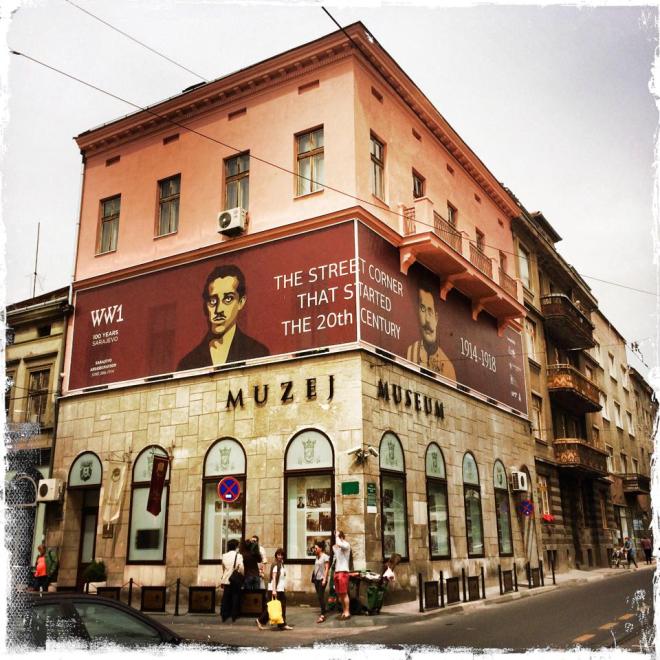
The purpose of the international conference was to create a space for discussion and dialogue, which focuses on this deeply rooted cultural memory and its implications. A difficult task, they said. Sometimes, the questions were easy to address. A member of the audience said that Franz Ferdinand wanted the war. So Princip actually chose the wrong target by assassinating the Archduke that day. To this Professor Colovic replied by saying that the assassin was unaware of this, and that now, it is too late.
Even today, an in-depth understanding of the myth proves to be challenging. “It’s as if you pull out your old silverware out of the closet to dust it off after a long time, and it wants to remain unbiased”, Ruthner explains. The decision to chose Sarajevo, the capital of Bosnia and Herzegovina, as the venue for the conference could not have been more logical, since the several versions of the assassination and its aftermath cannot be found in any other place in the world. In this way, the hosts and participants are at home of their subject matter. As Preljevic describes, “At first, Princip was hailed as a Yugoslav nationalist, while during his later phase, he becoming increasingly identified as a Serb. During the war in Sarajevo in the 1990s, the war criminal Radovan Karadzic planned to rename Sarajevo after Princip, calling it “Principgrad”. The idea of a Greater Serbian Empire or Great Serbia is still anchored in the minds of Serbian nationalists and isolated cases of members of the Serbian Orthodox Church. Even today, Princip is recognized for his ideology, in that both, the Serb Republic and Serbia celebrate his monumental importance and identify him as a Serbian hero. “There was an official prohibition from the president’s office instructing that no one is to participate in any commemorative events relating to the First World War in Sarajevo. This was of course due to the fear of non-participation on behalf of the Serb Republic”, the hosts explain.
A hundred years later, Princip is still either idealized or demonized. “A young man from the Bosnian hinterland who brought his people freedom. Gavrilo ignited a war, which ended the rule. Yugoslavia was the new nation that gave the Slavs their own identity and state. As the interest in Yugoslavia died in the 1990s, the interest in Gavrilo Princip died as well,” Butcher writes. The Balkan War of the 1990s was a direct continuation of the First World War in Bosnia. “Gavrilo Princip is an important ideological figure of cultural memory. But he is also the victim. “In the end, they let him rot in jail”, Preljevic and Ruthner said in their concluding remarks. Gavrilo Princip died of tuberculosis in 1918. He was twenty-three years old.
Today, only a stone slab of Gavrilo Princip stands as a reminder. It is installed at the Sarajevo intersection where he fired his fatal shots. His grave in the Kosevo cemetery is hardly known. To posterity he left the following verses, which he had scratched with a spoon on the wall of his prison cell:
Our shadow will walk in Vienna, will wander in the court and will terrify the power!
German Version:
https://balkanblogger.com/2014/11/09/tater-oder-opfer-gavrilo-princip-und-der-erste-weltkrieg/



